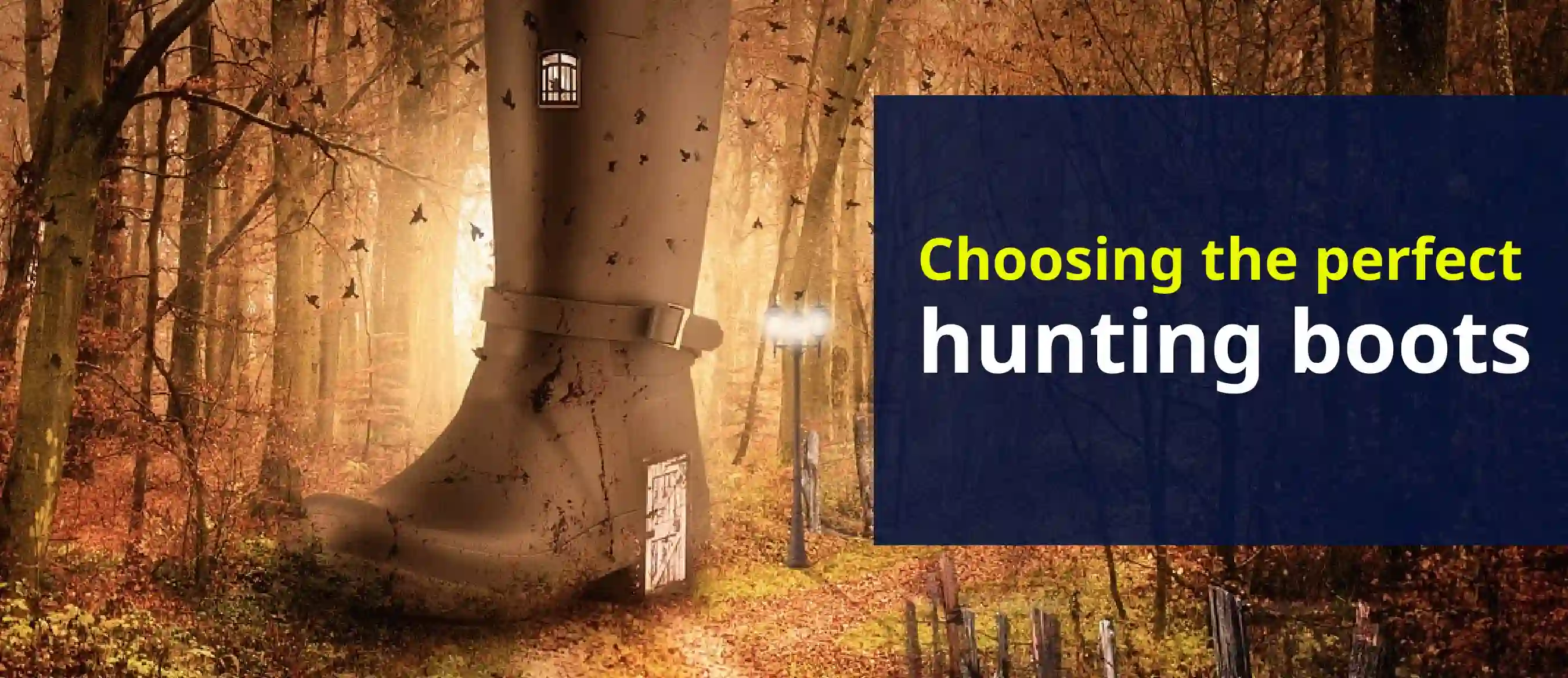Hunting boots: What to look for and how much should you pay?
29-Jan-2025

Chris Cooper
When it comes to hunting, the right pair of boots is more than just an accessory—they’re an essential part of your gear. Whether you’re trekking across wet fields, navigating rocky terrain or standing in a cold, damp forest, your hunting boots play a critical role in your comfort, safety and performance. But with so many options on the market, one of the most common questions hunters face is: How much should I expect to pay for a good pair of hunting boots?
In this blog, we’ll break down what you should look for in hunting boots, the price range you can expect for a high-quality pair and the pros and cons of both expensive and cheap boots. This will help you make an informed decision and ensure you get the most value for your money.
How much should you pay for good hunting boots?
The price of hunting boots can vary significantly based on the materials, features and brand. On average, you can expect to pay anywhere between £50 to £400+ or more for a quality pair of hunting boots.
Entry-level boots (£50 - £150): These boots are often made of synthetic materials or budget-friendly leather. They typically offer basic waterproofing, moderate insulation and decent grip for mild terrain. These boots may be suitable for beginners or those who don’t need to spend extended hours in the field.
Mid-range boots (£150 - £250): In this range, you’ll find boots with better durability, advanced waterproof membranes (such as Gore-Tex), increased comfort features (e.g., padded insoles) and more robust construction. Mid-range boots are suitable for more frequent or serious hunters who need boots that can handle various conditions and offer enhanced foot protection.
Premium boots (£250 - £400+): High-end hunting boots are designed with superior materials, cutting-edge technology and built for long-lasting comfort. These boots are often more durable, highly breathable, fully waterproof and can offer additional features such as enhanced insulation for colder climates or specialised soles for extreme terrains. If you’re a professional hunter or expect to be in the field for long, hard days, premium boots might be worth the investment.
Expensive vs. cheap hunting boots: The pros and cons
Now that you have a general idea of what you can expect to pay, let’s dive deeper into the pros and cons of both expensive and cheap hunting boots. Understanding the benefits and drawbacks will help you choose the best pair for your needs and budget.
The pros of expensive hunting boots
Superior durability
Expensive boots are typically made from high-quality leather, premium rubber or advanced synthetic materials, which means they’re designed to last longer. These boots often feature reinforced stitching and tougher soles that can handle rough terrain and extreme weather conditions.
Enhanced comfort
Premium boots come with advanced comfort features like shock-absorbing insoles, padded collars and footbeds that mould to your feet over time. If you’re planning on being in the field for long hours or days at a time, comfort is key. High-end boots will help reduce foot fatigue, blisters and other discomforts that can arise with extended wear.
Waterproofing and breathability
Expensive boots often feature top-tier waterproofing technologies, such as Gore-Tex or Sympatex liners, which provide full protection against water while allowing your feet to breathe. This is particularly important for hunting in wet conditions, as keeping your feet dry can prevent discomfort, blisters and potential health risks like fungal infections.
Better insulation
If you’re hunting in cold climates, many premium boots offer advanced insulation technologies, such as Thinsulate or Primaloft. These materials retain heat and offer better temperature regulation, ensuring your feet stay warm even in freezing conditions.
The cons of expensive hunting boots
High initial investment
The most obvious downside is the upfront cost. Premium hunting boots can be expensive and if you don’t hunt frequently or don’t need boots for tough conditions, this might not be the best option for you.
Weight
Some high-end boots, especially those with heavy-duty insulation or extra features, can be heavier. While this provides more durability, it can make the boots less comfortable if you need to walk long distances or across uneven terrain.
Overkill for casual use
If you’re a recreational hunter or only hunt occasionally, premium boots may be more than you need. In some cases, the advanced features may be excessive and not justify the higher price.
The pros of cheap hunting boots
Affordability
The most attractive feature of budget hunting boots is their low price. For hunters on a budget or those who don’t venture into the field often, cheaper boots can be a great option. They provide essential protection at a fraction of the cost of premium models.
Lightweight
Cheap boots are often lighter and less bulky than their more expensive counterparts, making them a good choice for short hunts or activities where comfort and speed are more important than durability.
Simplicity
If you’re only looking for basic functionality (such as waterproofing and traction), inexpensive boots can still provide a solid solution. Many budget models still offer good water resistance, decent insulation and solid grip on a variety of surfaces.
The cons of cheap hunting boots
Limited durability
The biggest downside to cheap boots is their lack of durability. These boots are often made from lower-quality materials like cheap rubber or synthetic fabrics that wear down quickly, especially after prolonged use. They may not hold up well in harsh environments or extreme weather conditions.
Lack of advanced features
Budget boots typically lack the high-end features that premium models offer. You may not get advanced waterproofing, insulation or breathable membranes, which can lead to discomfort and less protection on longer hunts or in more demanding conditions.
Reduced comfort
Cheap boots may not have the same level of comfort or support, which could lead to sore feet, blisters or fatigue over time. Their thinner insoles and lack of cushioning often make them less comfortable for long hours of walking or standing.
Which boots are right for you?
Ultimately, the right hunting boots for you depend on your budget, hunting style and environment. Here are some tips to help you choose:
Casual hunters or beginners: If you’re new to hunting or only hunt a few times a year, budget-friendly boots will likely be sufficient. Look for boots with decent waterproofing and basic comfort features.
Frequent hunters: If you’re an avid hunter who spends a lot of time outdoors, investing in a mid-range or premium pair will provide better performance, durability and comfort over time.
Extreme conditions: If you hunt in very cold, wet or rugged environments, you should opt for a higher-end boot with better insulation, waterproofing and foot support.
Invest wisely for long-term comfort and performance
When it comes to hunting boots, you often get what you pay for. While cheap boots may seem like an attractive option, they can fall short in terms of durability and comfort. On the other hand, premium boots are built to withstand the elements and provide long-lasting comfort, but they come at a higher price.
Consider your specific needs, the frequency of your hunts and the conditions you’ll be facing when choosing a pair of boots. A well-made pair of boots is an investment in your comfort and safety, ensuring that you can focus on the hunt rather than worrying about sore feet or wet socks.
Must read:
